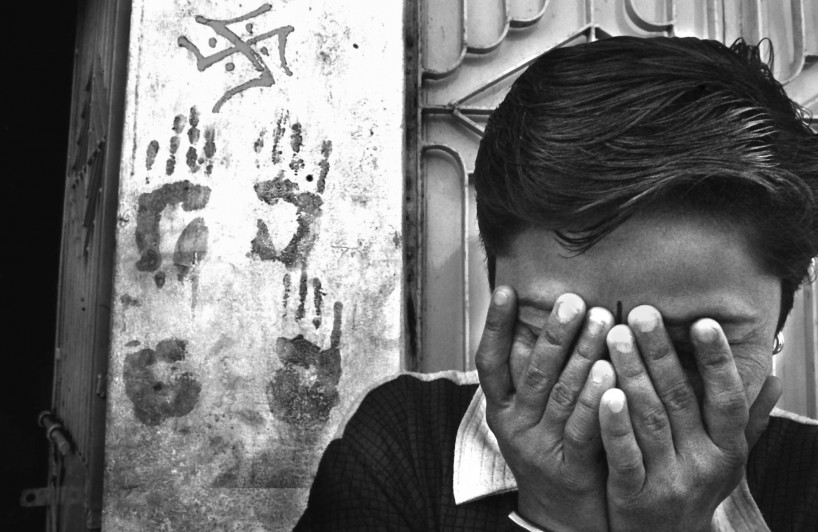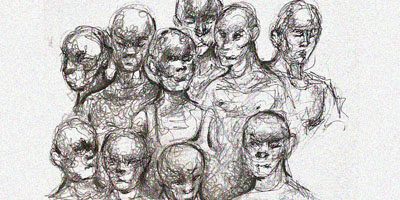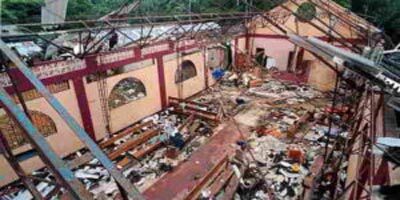A gathering of radical Hindus in 2002 turned into a riot at Babri Masjid, Ayodhya, setting off sectarian violence that killed more than 2,000 people in the weeks following.
Gopal Menonc’s film “Hey Ram” chronicles twelve days of anti-Muslim riots in Gujarat, India, in 2002. Years later, these crimes remain unpunished, perpetuating what is being called the “Muslim Indian genocide.”

The riots began after a train caught fire in Godhra, Gujarat, killing at least 58 people. Muslims were blamed, and subsequently violent mobs attacked Muslims and their property.
The official investigation in 2002 suggested that the train fire was not caused by a Muslim mob, since the fire was set from within and the doors were locked internally. So what ignited this anti-Muslim sentiment?
Many of the victims of the train fire were activists for Vishwa Hindu Parishad (VHP), a right-wing humanitarian organization based on Hindu values, though officially inclusive of other religions. They were returning from the contentious Babri Masjid (Mosque of Babur, once one of the largest in Uttar Pradesh) site in Ayodhya which has been, at different times, a place of worship claimed by both Hindu and Muslim groups.
The site is contentious. In 1992, the Hindu nationalist Bharatiya Janata Party (BJP) began construction of a new Hindu temple in Ayodhya, in part as a way of symbolically reclaiming India as Hindu. At the December ceremony marking the start of the project, Hindu crowds rioted and destroyed the mosque, claiming that it stood where a temple to Lord Ram had once been.
Montreal’s South Asian Woman’s Community Center (SAWCC) has been lobbying for accountability for the killings in the 2002 riots. In an interview for the Upstream Journal, Dr. Dolores Chew, a founding member of the SAWCC, described the background of anti-Muslim sentiment.
The BJP proposed sending all Muslims to Pakistan, she says, and argued that affirmative action was simply governmental favoritism for Muslims. The BJP stressed high Muslim fertility rates to suggest that Hindus would eventually be outnumbered.
This kind of propaganda, disseminated by organizations affiliated with the BJP, such as the VHP, through speeches, audio and videotapes, pamphlets and graffiti, asked Hindus to boycott Muslim businesses and avoid personal contact.
Dr. Chew says that these measures were effective in making “the majority feel minoritized.”
This anti-Muslim platform, combined with popular dissatisfaction with the Indian National Congress, strengthened the BJP. A minority in the late nineties, the BJP was eventually elected by forming the National Democratic Alliance (NDA) with 22 smaller, mostly secular, parties.
The violence that followed the train fire is perceived by the SAWCC and others as condoned by local authorities with anti-Muslim bias.
“The culprits will get full punishment for their sins,” the Chief Minister of Gujarat, Narendra Modi, said in a public announcement the day after the fire. “Not only this, we will set an example so that nobody, not even in his dream, would think of committing a heinous crime like this.”
In Tremors of Violence: Muslim Survivors of Ethnic Strife in India, Rowena Robinson described how mobs of up to 10,000 people could gather without concern about hindrance by authorities.
In the April 2002 Financial Times, Edward Luce reports that six weeks after the massacre, the Indian PM Atal Behari Vaypayee blamed the massacre on the Muslim minority. Essentially, he argued that they deserved the backlash for attacking the train, despite the absence of conclusive evidence that Muslims were responsible. Anti-Pakistan rhetoric had been popular in politics, but the BJP differentiated itself with its anti-Muslim stance.
In the years since, despite multiple reports by local and international organizations, no real measures have been taken to punish those responsible. Dr. Chew lists a number of reasons for this, including the problem of corruption in civil law administration.
First, to begin an investigation a First Information Report (FIR) must be lodged, usually in a police station. However, after the massacre, Muslims were unable to fill out reports because they were in refugee camps. Even if they could, a 2003 Human Rights Watch (HRW) report states that many Muslims had to keep quiet if they wanted to return to their homes and jobs.
Even so, some were reports filed, including that of Bilquis Begum who was able to lodge a FIR and even to name her attackers after being raped and left for dead.
Second, the police would sometimes group several reports together to make one case, rendering it too broad to bring to trial.
Third, some judges, police and prosecutors support the BJP and have been reluctant to pursue cases. Some who insisted on following protocol were transferred.
The NDA “systematically obstructed efforts to bring the perpetrators to justice,” according to the HRW report. Nonetheless, after the investigation of what was called the “Best Bakery” case – in which eleven Muslims and three Hindus, including women and children, died in an arson attack – the Supreme Court indicted the Gujarat government.
The targeting of the Muslim community has continued long after the massacre, Dr. Chew said. Muslims are racially profiled, even for crimes for which they are victimized.
“Whenever there is some kind of threat or scare, Muslims are rounded up,” Dr. Chew said. “In fact, many more Muslims were arrested, per capita, after what happened in Gujarat than Hindus.”
Government officials have denied this, claiming that arrests were mostly of Hindus.
Dr. Chew describes the Gujurat events as genocide. “It was not just killing some people or one incident – it is creating this climate where people are in danger.”
There have, however, been efforts to ease tensions. The Gujarat Harmony Project aims to reestablish relations between the two communities by promoting positive relationships at individual and associational levels.


